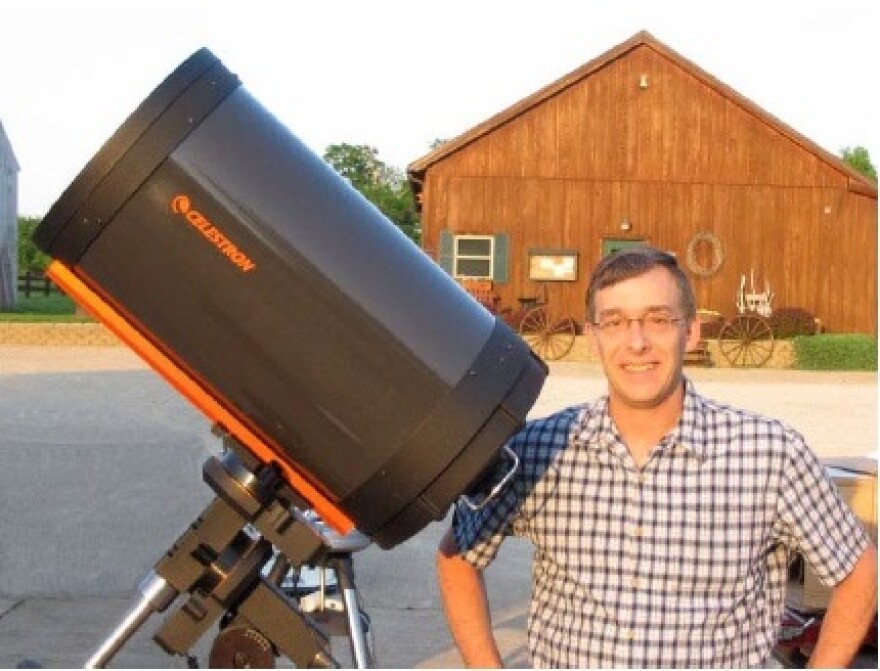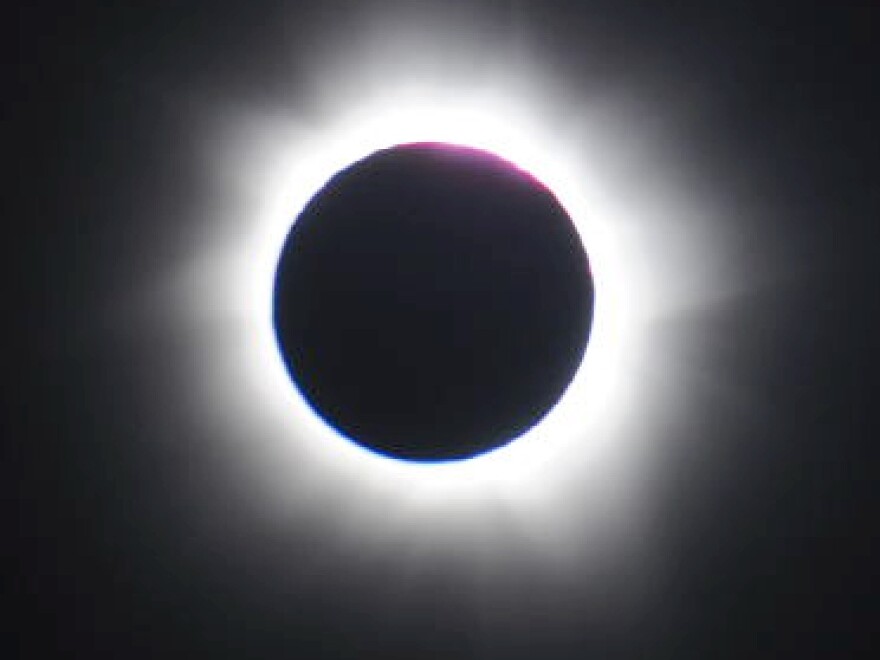Day will look dark as night. Stars will shine at midday. Birds that are normally vocal during the day will suddenly grow silent. The daytime spectacle will rouse insects and other wildlife that usually come out only at night.
On August 21, sun lovers and star gazers will be able to feast their eyes on a sight not seen across North America in nearly 100 years: the moon passing between the sun and the earth in a total eclipse. What scientists are calling "The Great American Eclipse" will be visible throughout Illinois.
"The event in and of itself is almost magical," said Lee Green of the Twin City Amateur Astronomers. "You look up and see a black sun surrounded by a white corona. It is that kind of moment and kind of sight that raises the hair on your arms."
Weather permitting, those watching in central Illinois, including McLean County, will see only a partial eclipse. But it promises to be a spectacular sight.
"Here we will have about a 93 percent eclipse. We will see the sun as a very, very thin crescent," Green said on GLT's Sound Ideas.
The best viewing in Illinois will be in the southern part of the state, around Carbondale. The city is gearing up for tens of thousands of visitors. About 15,000 people have bought $25 tickets to watch the cosmic spectacle from the football stadium at Southern Illinois University. Hotels in the city have been booked for more than a year.
Solar eclipses actually happen about every six months somewhere in the world, just not over the U.S. The breadth of this eclipse makes it unusual.
It will be visible first in the western U.S., over Portland, Oregon. "It will go over Casper, Wyoming; over Carbondale, Illinois; Nashville, Tennessee; and exit the U.S. at about Charleston, South Carolina," Green said.
Even though 90 percent of the sun will be covered, it is not safe to look directly at the eclipse. It will burn the eyes—literally.
"The sun is so bright you cannot stand to look at it. It will burn the back of your eyes," Green said.
Green suggests getting a pair of eclipse glasses—a low-cost plastic option that looks like 3-D glasses and can block about 99 percent of the light. Eclipse glasses can be purchased online for about $1, Green said.
"There are also other projection techniques. We have what is called a sun funnel that will take a very small telescope and project it onto a 6-inch piece of material. It gives you a good view of what is happening but does so in a safe manner," Green said.
There are also sun telescopes specifically designed to look at the sun and do the necessary filtering of light.
Although it will take the moon about an hour to pass totally between the earth and sun, the most dramatic view will occur when the sun is totally obscured by darkness. That will last only about 2 minutes and 40 seconds.

Green said he has has seen two solar eclipses in the past, in 1979 in Canada and in 1997 in the Caribbean. He will be watching this time from Carbondale.
The next total solar eclipse visible in the U.S.—including Illinois—won't take place until April 8, 2024.
Green will give a lecture on the upcoming eclipse Thursday at the Illinois State University Planetarium at 7 p.m. The program is sponsored by the Illinois Grand Prairie Master Naturalists and is free and open to the public.
The Twin City Astronomers will give a presentation about the eclipse July 29 from 9-11 p.m at the Sugar Grove Nature Center near Funks Grove. They will also offer a laser-guided sky tour and have telescopes set up for night sky observation.
WGLT depends on financial support from users to bring you stories and interviews like this one. As someone who values experienced, knowledgeable, and award-winning journalists covering meaningful stories in central Illinois, please consider making a contribution.


